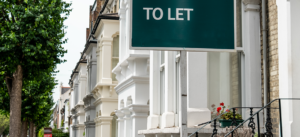How to get Started in Buy-to-Let

Private renting has become the norm for many people in the UK. The rental sector has more than doubled since 2001 and this trend is set to continue with more than half of 20-39 year old’s expected to be renting privately by 2025.
With this in mind, are you thinking of becoming a landlord? If so, we’ve put together some helpful tips to help you get started in the world of buy-to-let.
How do you become a landlord?
Being a landlord is a commitment, but one that could be well worth your time. Private rental prices have been growing steadily in Britain in recent years, and not only does this provide a nice passive income, it’s also a great way to protect your assets.
Getting Started
The first thing to consider is whether your property would work as a rental. Make sure the state of your home’s repair is up to code and all your paperwork is in place. If you were left a property in an inheritance, you might need to do some renovation work.
You should also consider if there’s any rental demand in your area. It is no longer a case that people only rent studios in the big city, but rather there are families looking to rent big houses in the suburbs too.
Another thing to consider is seeking advice with other experienced landlords. They can help you decide whether you’re going to be hands-on or hire a letting agency, and whether you’re going to rent out your property with furniture or without.
Finally, make sure to set yourself up as a business owner, register for self-assessment with HMRC so you don’t get in trouble with the taxman.
Questions to ask yourself
Allowing pets could be a positive selling point for tenants, but keep in mind pets can cause damage to any furniture in the property.
How to buy your first property
Unless you’re fortunate enough to be able to buy outright, you are going to need a buy-to-let mortgage. A buy-to-let mortgage is a type of home loan for buying property that you intend to rent out to residential tenants, usually for a profit, or at least to break even.
The amount you can borrow depends on the rental income you expect to receive from the property, although other sources of income may also be considered. Take a look at how much you can borrow here. Generally, most lenders specify your rental income needs to be around 25% to 45% higher than your mortgage payment. Other things to keep in mind are:
- Make sure your credit report is in the best possible shape
- Keep in mind that the maximum age is usually around 75, although some lenders may have lower age limits.
- Your lender might ask you to provide evidence of personal income separate from rental earnings (this is typically around £25,000+ a year).
- Your loan-to-value ratio limit is at least 75%, so you will need a minimum of 25% deposit for a buy-to-let mortgage.
- Though not always the case, your lender may make it a condition that you already own your own home, either outright or with an outstanding mortgage.
If you are thinking about becoming a landlord, there are restrictions to a buy-to-let mortgage you need to know about, such as you cannot live in your investment property without permission from the lender.
You will need to consider the costs on a buy-to-let mortgage. Interest rates on buy-to-let tend to be higher than they are for residential mortgages and many lenders also charge a product fee. There may also be times when your property does not have tenants, so there could be times when rent isn’t being paid. Make sure you have financial back-ups so you can continue to repay your mortgage. Also research and understand the tax implications for buy-to-let investors, both on rental income and when you sell.
Finally, there are alternatives to getting a BTL mortgage, like remortgaging your primary residence to release equity to fund the purchase.
What are the costs of being a landlord?
Although rental income should cover the majority of your costs, it’s important to have a contingency budget in place in case things go wrong. Here are some of the costs to consider:
- Repairs – if something breaks in the property it may be up to you to pay for the repairs. Remember to keep receipts for repairs you’ve paid for as these may be tax deductible.
- Furniture – if your property is furnished you might need to replace any old furniture which might be a fire hazard. You’ll also need to replace furniture which becomes damaged or unsafe.
- Insurance – whilst tenants usually take responsibility for monthly bills like gas and electric, you will still be responsible for insurance and you’ll need a special type of home insurance to safeguard your property against the risks of letting to tenants.
- Mortgage repayments – if you don’t own your property outright, you’ll still need to pay your mortgage.
- Bringing your property up to code – you’ll need to spend a bit of money to ensure your property is up to standard, this includes fire safety precautions, electrical upgrades, refurbishment costs (painting and decorating) and so on.
- Agency fees – an agency will usually charge around 10 to 15% of the rent, but that means you don’t have to be ‘on-call’ for tenants.
- Solicitor’s fees – you should get your tenancy agreement looked over by a legal professional to ensure it’s watertight.
- Membership of a Landlord Association – there are lots of benefits to joining a landlord association, including a network of supportive colleagues that you can turn to for advice, and being accredited gives you a competitive advantage in the market.
- Energy performance certificate – these can cost from £50 to £100 and are a legal requirement if you’re renting or selling your property. Each one lasts for ten years.
How to find the right tenant
Once you’ve sorted out the paperwork and your property is ready, what steps should you take to find the right tenant?
Advertising
When advertising your property for rent, you should treat it like getting it ready for sale. Make sure you go for a neutral look, you might love something that is off putting to another, so try to leave your feelings at the door and take away any personal possessions left in the property. If it is an unfurnished property, remove any furniture so people don’t get the wrong idea.
Make sure you take professional photographs, this will be the first thing tenants judge when viewing your property. Consider investing in a professional camera rather than snapping with your smartphone, and ensure you take photos with plenty of light in the room.
If you’re using a letting agent, they’ll probably advertise on a big housing website, other options can be social media sites, or the local press. Think about what kind of tenant you want to rent to, and whether your property makes sense for the type of person you’re renting to, for example a single tenant is unlikely to want to rent a big property in the countryside.
Once you’ve sorted your advertising, people will want to come and see your property. You can either hold an ‘open house’ where people visit between set hours, or you can arrange appointments on a one-to-one basis. Before they arrive, make sure the place is tidy, and as you are showing them around take the time to explain any special features. Let them have time to explore on their own, and tell them where you’ll be if they have any questions.
Background checks
Once you think you have found a suitable tenant you will need to do some background checks to ensure the person is reputable and will be able to pay their rent on time. You will want to look at:
How much they earn, if they have savings, outstanding debt on their credit card, the balance of their bank accounts and so on.
If you’re renting in England, you’ll also need to carry out the right to rent checks.
